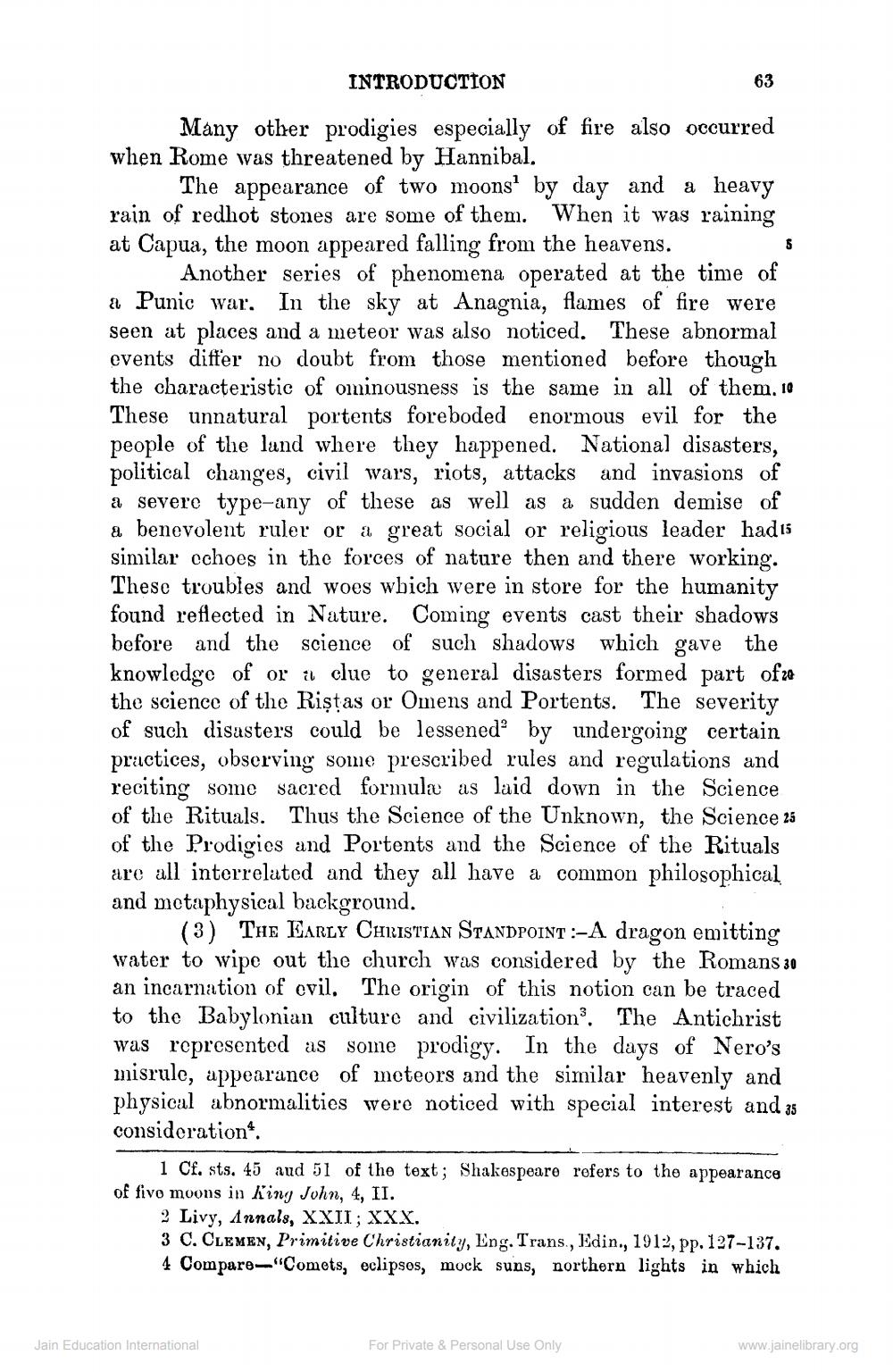________________
INTRODUCTION
Many other prodigies especially of fire also occurred when Rome was threatened by Hannibal.
The appearance of two moons' by day and a heavy rain of redhot stones are some of them. When it was raining at Capua, the moon appeared falling from the heavens.
63
5
Another series of phenomena operated at the time of a Punic war. In the sky at Anagnia, flames of fire were seen at places and a meteor was also noticed. These abnormal events differ no doubt from those mentioned before though the characteristic of ominousness is the same in all of them. 10 These unnatural portents foreboded enormous evil for the people of the land where they happened. National disasters, political changes, civil wars, riots, attacks and invasions of a severe type-any of these as well as a sudden demise of a benevolent ruler or a great social or religious leader had5 similar echoes in the forces of nature then and there working. These troubles and woes which were in store for the humanity found reflected in Nature. Coming events cast their shadows before and the science of such shadows which gave the knowledge of or a clue to general disasters formed part of the science of the Riṣṭas or Omens and Portents. The severity of such disasters could be lessened by undergoing certain practices, observing some prescribed rules and regulations and reciting some sacred formula as laid down in the Science of the Rituals. Thus the Science of the Unknown, the Science 25 of the Prodigies and Portents and the Science of the Rituals are all interrelated and they all have a common philosophical and metaphysical background.
(3) THE EARLY CHRISTIAN STANDPOINT:-A dragon emitting water to wipe out the church was considered by the Romans 30 an incarnation of evil. The origin of this notion can be traced to the Babylonian culture and civilization3. The Antichrist was represented as some prodigy. In the days of Nero's misrule, appearance of meteors and the similar heavenly and physical abnormalities were noticed with special interest and as consideration*.
Jain Education International
1 Cf. sts. 45 and 51 of the text; Shakespeare refers to the appearance of five moons in King John, 4, II.
2 Livy, Annals, XXII; XXX.
3 C. CLEMEN, Primitive Christianity, Eng. Trans., Edin., 1912, pp. 127-137. 4 Compare "Comets, eclipsos, mock suns, northern lights in which
For Private & Personal Use Only
www.jainelibrary.org




